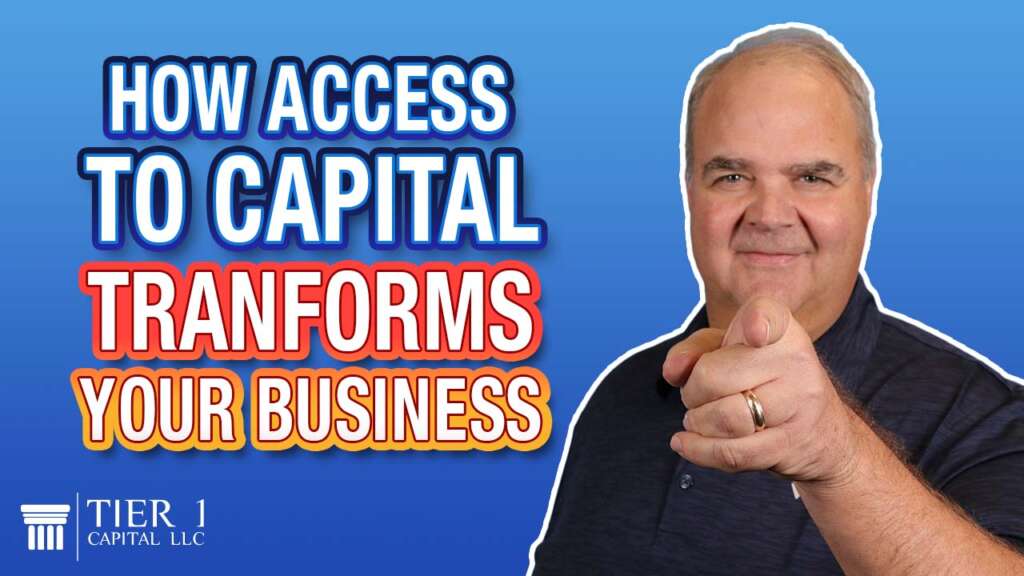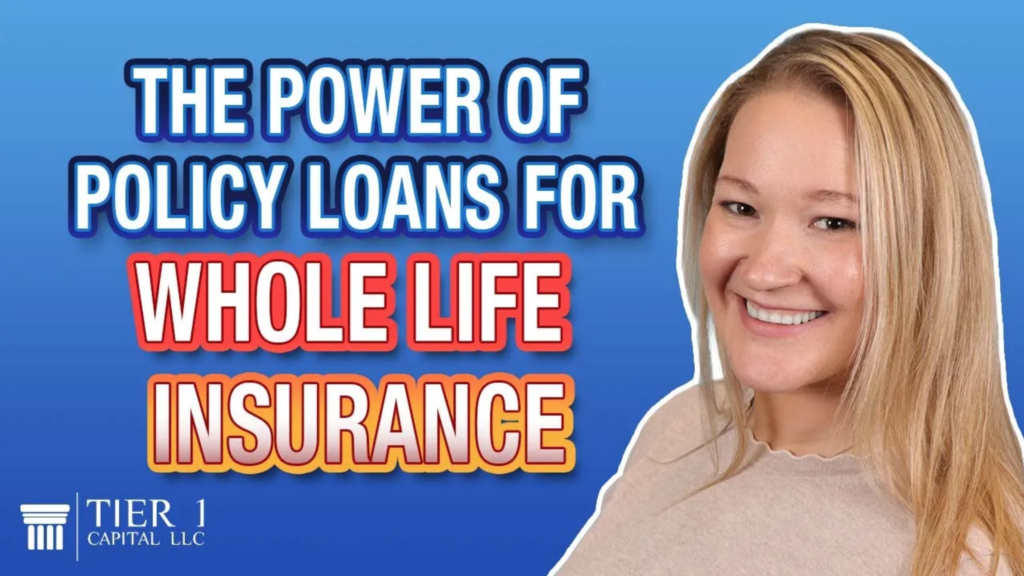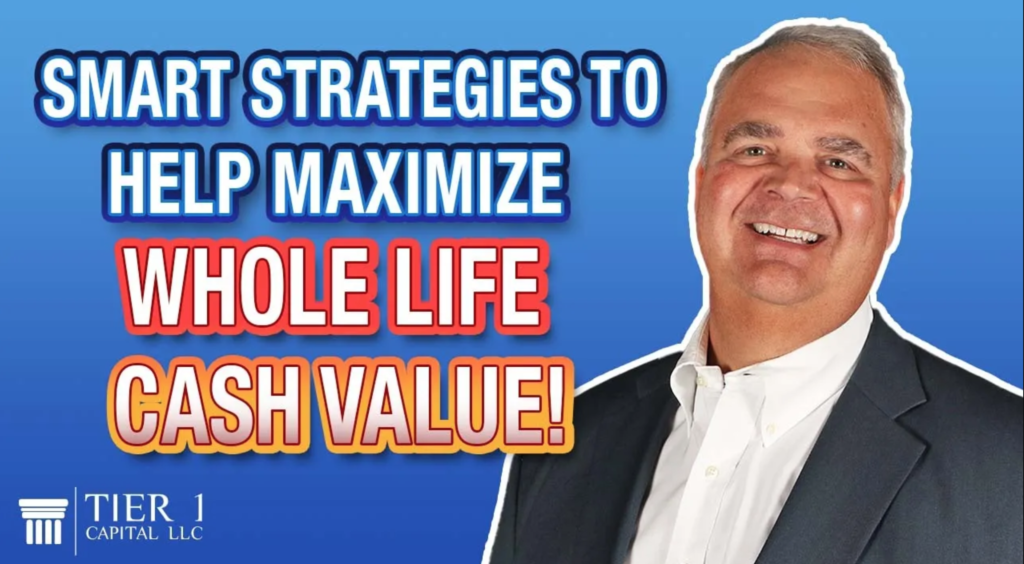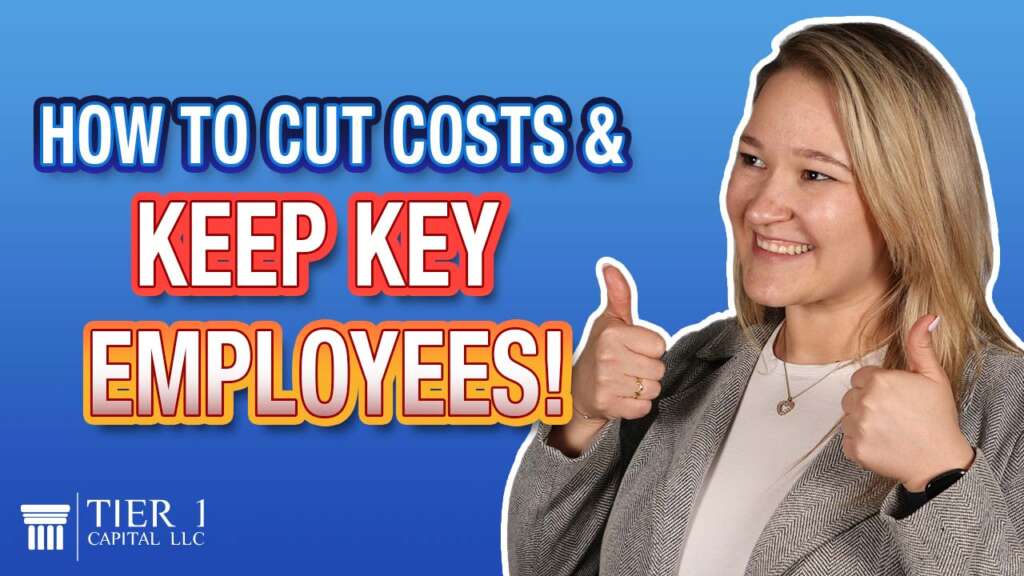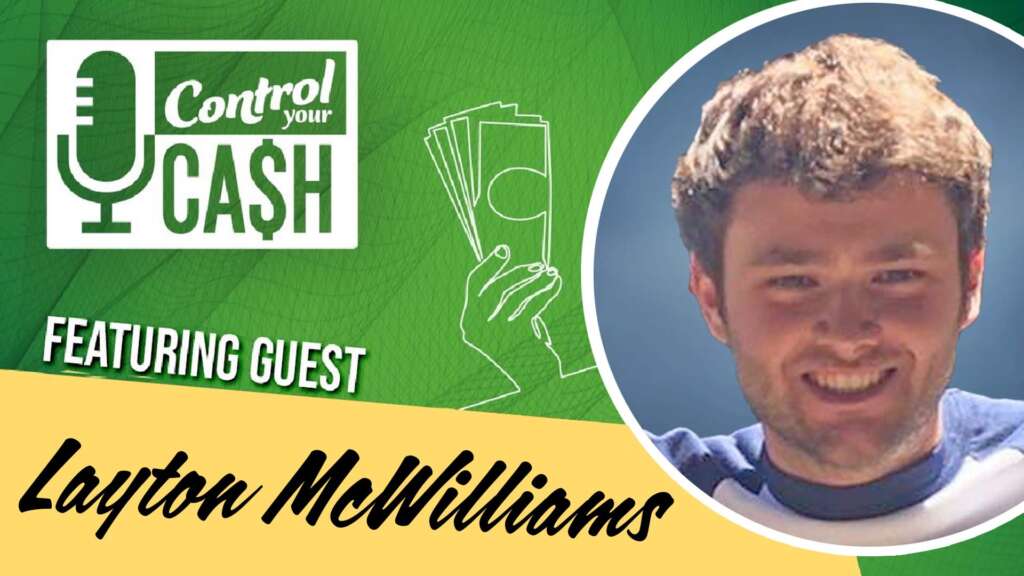Transcript
Olivia: Hello and welcome to the Control Your Cash Podcast. I’m your host, Olivia Kirk.
Tim: And I’m your co-host, Tim Yurek. We have our returning guest, Layton McWilliams. Layton, welcome to the show again!
Layton: Thanks for having me back. I’m excited to be here and really excited to get into silver this time.
Olivia: Yeah, absolutely. Last time we had a great conversation regarding gold. I know today we’re going to touch a little bit on gold, but mainly focus on silver. Our audience really enjoyed the gold discussion last time, so we appreciate you taking the time to come back today.
Layton: My pleasure, my pleasure.
Tim: Let’s start off with a question: What do you think is the main difference between deciding to purchase gold versus silver?
Layton: That’s a great question. I’d say the biggest difference is affordability. More Americans can afford to invest in silver compared to gold. Right now, silver is hovering around $30 an ounce, whereas gold is closer to $2,700 or $2,800. For the average American, silver is more accessible and aligns better with budgets.
Olivia: Certainly, you’re able to have more reach with silver if it fits within your budget. What about silver’s role as an inflation hedge? Does it work similarly to gold, or are there downsides to its affordability?
Layton: Great question. Both silver and gold serve the same utility as hedges against inflation and alternatives to the current monetary system. However, silver’s current undervaluation in US dollars makes it particularly attractive. It has more upside potential Tim Yutek: Have you seen an increase in demand for gold and silver over the past few years?
Layton: Absolutely. Over the past five to ten years, both metals have gained relevance in everyday financial conversations. While gold and silver aren’t fully mainstream yet, more Americans are starting to explore their potential.
What’s especially exciting about silver is its industrial demand. Silver is highly conductive and reflective, which makes it essential for emerging technologies like solar panels, electric vehicles, and electronics.
Olivia Kirk: What about AI? Are there any links between silver and the artificial intelligence industry?
Layton: While there isn’t a direct link, AI relies heavily on technological infrastructure, which involves electronics powered by silver. Interestingly, we’ve been in a global deficit where the amount of silver mined hasn’t met the demand for manufacturing. This trend should catch people’s attention—it’s all about supply and demand.
Layton: Silver’s dual role is what makes it unique. It’s critical for industrial use but also has financial demand. This combination is why I think silver will continue to gain traction.
Tim: You mentioned earlier that silver is undervalued. Can you explain this further?
Layton: Sure. One of the key metrics I use is the gold-to-silver ratio. This measures how many ounces of silver are needed to equal the value of one ounce of gold. Historically, this ratio has been much lower—around 40:1 or even 15:1. Today, it’s at 86:1, which indicates silver’s significant undervaluation compared to gold.
Tim Yurek: You mentioned the gold-to-silver ratio is 86:1. What does that mean for investors?
Layton: It’s one of the most telling metrics for silver’s undervaluation. At today’s ratio, it takes 86 ounces of silver to equal the value of one ounce of gold. Historically, this ratio has been much lower—closer to 40:1 on average, or even as low as 15:1 during some periods.
For investors, this creates an opportunity. If you buy silver now and the ratio normalizes over time, you could use your silver to acquire more gold at a much better rate. It’s a way to leverage silver’s undervaluation strategically.
Olivia: So, you’re saying silver can be a stepping stone to owning more gold?
Layton: Exactly. Gold is the ultimate steady form of wealth, but silver’s current pricing gives it an edge. It’s a great time to consider diversifying into both metals, but silver’s potential for growth makes it a particularly exciting option right now.
Tim: What about industrial demand? How does that factor into silver’s future?
Layton: Silver has unique properties—it’s the most conductive and reflective of all pure elements. That makes it essential for high-tech applications like solar panels, electric vehicles, and electronics.
Right now, global silver production isn’t keeping up with manufacturing demand. For the past two years, we’ve been in a silver deficit, meaning we’ve used more silver than we’ve mined. This supply-and-demand imbalance could drive prices up further, especially as emerging technologies continue to grow.
Olivia: That’s fascinating. With this growing demand, silver sounds like an incredible investment opportunity. What’s your advice for someone looking to buy silver?
Layton: The first step is to understand why you’re buying it. Silver can be a financial hedge, a long-term investment, or even a tool to trade for gold down the line. Knowing your goals will help determine the right strategy.
I always recommend starting small if you’re new to precious metals. For example, you can purchase junk silver—U.S. coins made before 1965 that contain 90% silver. These are highly recognizable and easy to use for transactions in case of an emergency.
Tim: What exactly is junk silver?
Layton: Junk silver refers to dimes, quarters, and half-dollars minted before 1965. Back then, these coins were made from 90% silver. Today, a single silver dime is worth about $2.20. Junk silver is affordable, versatile, and great for bartering if needed. It’s also a good starting point for anyone new to investing in silver.
Olivia: How do you recommend storing silver for long-term safety?
Layton: That’s a big consideration. Most clients keep it at home in a secure safe, but I’ve heard some creative storage ideas—one client even used silver bars as garden dividers!
For more serious investors, we offer a private, fully insured vaulting service outside the banking system. This option is ideal for clients who want professional storage without relying on banks or safety deposit boxes, which I generally advise against.
Tim: Why avoid safety deposit boxes?
Layton: Storing your silver in a safety deposit box puts it back under the banking system’s control, which defeats the purpose of owning physical metals. Plus, the contents of safety deposit boxes aren’t insured by the FDIC, so you’re not protected if something happens.
Tim: Do you work with clients nationwide? How does that process work?
Layton: Absolutely. We work with clients across the country. For those who can’t visit our office, we offer fully insured shipping to your door. We also provide education and strategy consultations to ensure clients understand the options available and make informed decisions.
Tim: You mentioned earlier that silver is more accessible for small investors. What about those with larger amounts of wealth—how do they approach gold versus silver?
Layton: Great question. For clients investing $500,000 or more, priorities tend to shift. They’re less concerned with maximizing returns and more focused on preserving wealth.
Gold is more portable and easier to store, which appeals to high-net-worth individuals. For example, a single kilo gold bar weighs about 2.2 pounds and is worth over $80,000. Compare that to silver—it takes over seven pounds of silver to equal about $3,000 in value. So, for wealth preservation, gold is often more convenient.
However, I still encourage diversification. Even our high-net-worth clients are allocating a portion to silver because of its growth potential.
Olivia: Let’s talk more about leveraging silver strategically. How does that work?
Layton: The idea is to use silver’s undervaluation to your advantage. Right now, it takes 86 ounces of silver to equal one ounce of gold. As that ratio normalizes—say, to 40:1 or even 30:1—you can trade your silver for more gold.
For example, if you buy silver today and the ratio drops to 40:1, you’ll need far fewer ounces of silver to get the same ounce of gold. It’s a simple but effective strategy for building long-term wealth.
Tim: That’s a really smart approach. Is this something you see your clients actively doing?
Layton: Definitely. Many of our clients are already following this strategy. They view silver as a stepping stone to accumulate more gold over time. It’s not about chasing quick profits—it’s about positioning yourself for the long term.
Olivia: What do you say to people who might be hesitant about investing in silver or gold?
Layton: The hardest step is often the first one—just reaching out and starting the conversation. Once we understand your goals, we can help build a strategy that makes sense for you.
We pride ourselves on educating clients and providing transparent, no-pressure guidance. Whether you’re buying a single coin or investing millions, we’ll ensure you feel confident about your decisions.
Tim: You mentioned earlier that silver plays a major role in industrial applications. Do you see that demand growing in the future?
Layton: Absolutely. Silver’s unique properties—its conductivity and reflectivity—make it irreplaceable in many emerging technologies. For example, solar panels, electric vehicles, and electronics rely heavily on silver.
What’s especially interesting is that global silver production has been in a deficit for the past two years. This means we’re consuming more silver for manufacturing than we’re able to mine. As demand grows, especially with the push for renewable energy and new technologies, I expect this trend to continue.
Olivia: Does this industrial demand outpace its financial demand?
Layton: It’s a balance. Silver is unique because it serves both purposes—industrial and financial. While gold is primarily driven by financial demand, silver’s dual role gives it additional upside. That’s why I view silver as a “double-edged sword.” It’s critical for industries but also offers a hedge against inflation and a store of wealth.
Tim: Do you think silver could play a role in future monetary systems?
Layton: I do. Historically, gold and silver have always been reliable forms of money—they’ve never gone to zero. While I’m not saying we’ll return to a gold or silver standard tomorrow, there are movements globally to reintroduce these metals as part of monetary systems.
If that happens, it would create even more demand for silver. Think of it this way: even if industrial demand for silver continues to rise, monetary demand has the potential to completely outpace it.
Olivia: What about the role of innovation in the financial system? Do you see that impacting precious metals?
Layton: Definitely. I think we’re entering an age of innovation and a push to regain financial independence. More people are questioning the current monetary system and exploring alternatives like gold and silver.
At the same time, new technologies are making it easier to buy, store, and trade physical metals. For example, we offer private vaulting services where clients can buy and sell metals with a simple phone call. This kind of convenience is helping more people transition into owning physical assets.
Tim: It sounds like gold and silver are becoming increasingly important as tools for financial freedom.
Layton: Exactly. They’re the kryptonite to the current financial system. Gold and silver allow people to exit the manipulated banking system and take control of their wealth. That’s why education is such a big part of what we do.
Olivia: Layton, for someone who’s interested in getting started with gold or silver, what’s your best advice?
Layton: The first step is education. Don’t rush into buying anything without understanding why you’re doing it. We focus on educating clients about the role of gold and silver, their historical importance, and how they can fit into your financial goals.
Start small, especially if you’re new. For example, you can begin with junk silver—pre-1965 coins. These are affordable, recognizable, and practical for transactions. From there, you can diversify into larger investments like silver bars or gold coins.
Tim Yurek: What’s the biggest mistake people make when investing in precious metals?
Layton: Trying to time the market or chasing quick profits. Precious metals aren’t about speculation—they’re about stability and long-term wealth preservation. If you go into it with the mindset of making a quick return, you’re setting yourself up for disappointment.
Olivia: What does it look like to work with you and your company?
Layton: It’s a very personalized process. Whether you visit our office in Scottsdale or connect with us remotely, we start with a conversation to understand your goals. From there, we provide tailored advice and transparent pricing.
We also emphasize strategy. For example, if you’re buying silver, we’ll explain how it fits into your portfolio, when to consider trading it for gold, and how to store it securely.
Tim: How do people usually store their metals?
Layton: Most clients keep their metals at home in safes, but we also offer private vaulting services. This is ideal for larger investments or for clients who travel frequently. The vault is fully insured and operates outside the banking system, so it’s a secure option without relying on banks.
Olivia: What sets your company apart from others?
Layton: Education and transparency. A lot of gold and silver dealers try to keep clients in the dark about the process. We take the opposite approach—we want you to understand exactly what you’re buying, why it’s a smart choice, and how it fits into your overall strategy.
Tim: That makes a big difference. How can people reach you if they’re interested?
Layton: The easiest way is to email us at [email protected]. From there, we’ll set up a time to talk and guide you through the process.
Olivia: Layton, thank you so much for joining us again. This was incredibly informative!
Layton: My pleasure. Thanks for having me back.
Tim: We really appreciate your insights—gold and silver are fascinating topics, and you’ve made them so accessible.
Layton: Thank you. I’m happy to help.








